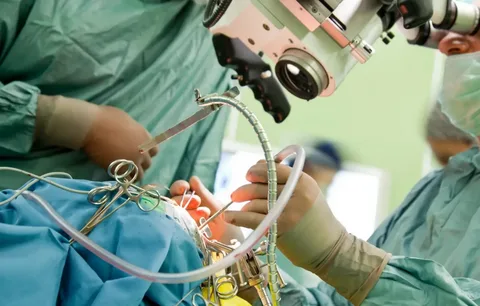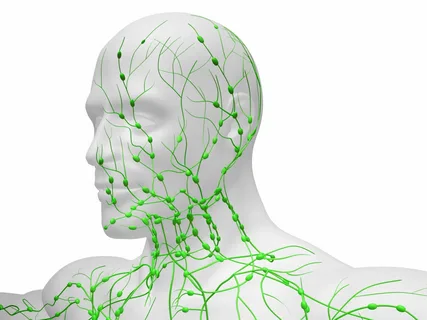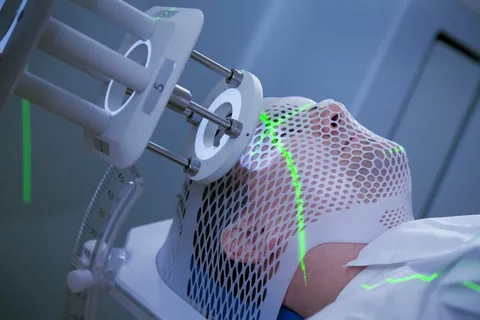Important Aspects of Malignant Tumor Treatment
Machine translation
Original article is written in RU language (link to read it) .
Treatment of malignant neoplasms is a complex task, and the techniques and approaches to treatment are constantly being modernized, aiming to achieve the most effective results. However, there are unchanging principles of surgical interventions for malignant neoplasms today.
For more current information on the diagnosis and treatment of oncological diseases, visit the section of our website Training in Oral and Maxillofacial Surgery.
The main principles are as follows:
- ablastics;
- antiblastics;
- radicalism;
- asepsis;
- antisepsis.
Ablastics is a set of manipulations aimed at preventing the penetration of tumor cells into the surgical wound, as well as their further hematogenous dissemination.

Figure 1. Surgical treatment of malignant neoplasm.
The following principles of ablastics are also distinguished:
- careful handling of tissues and organs affected by the tumor process, surgeon's gentle mobilization — do not divide the tumor, do not crush, try to extract the cellular tissue, adjacent lymph nodes, vessels, and organs as a single block;
- replacement of instruments and gloves during surgery, reliable hemostasis, performing electrocoagulation of vessels;
- thorough treatment of cavities with antiseptics;
- use of drainage until the wound is sutured.
In the process of performing surgical intervention, there are ways to increase the level of ablastics, which is possible thanks to the introduction of special surgical techniques: zoning and casing.

Figure 2. Lymph nodes of the head and neck.
An anatomical zone in oncology is a concept that defines a fragment of tissues formed by the affected organ, adjacent lymph nodes and vessels, and other structures located along the path of tumor process dissemination.
Adhering to the principles of anatomical encapsulation during surgical interventions involves performing manipulations within the confines of fascial anatomical sheaths, which prevent the spread of cancer cells.
Antiblastics involves a special impact on tumor cells before, during, and after surgical intervention, as the spread of cancer cells can provoke a recurrence of the disease. Antiblastics represents a set of manipulations aimed at destroying and removing malignant cells that have entered the area of the surgical wound.
Palliative and symptomatic treatment
The performance of palliative surgeries for malignant neoplasms is indicated when diagnosing unresectable tumors, as well as in cases where there are contraindications for performing radical surgical operations.
Symptomatic treatment for cancer diseases helps to alleviate the suffering of the patient, this group of manipulations includes the following:
- ligation of vessels in case of bleeding developed from a decaying tumor;
- tracheostomy, which is performed in case of asphyxiation.
A separate group of surgical operations includes rehabilitative ones, which are performed in case of successful removal of a malignant tumor to improve the quality of life of the patient and accelerate rehabilitation. These operations include:
- reconstructive;
- plastic;
- cosmetic.
Operations on regional lymph nodes
Cervical lymphadenectomy is a surgery that is performed in the case of confirmed metastasis to the lymph nodes, absence of metastasis regression during radiation therapy, or for preventive purposes (selective lymphadenectomy). When surgical intervention is the first stage of treatment, cervical lymphadenectomy is performed together with the excision of the primary neoplasm.
If the lymph nodes are affected by metastases on both sides, cervical lymphadenectomy is performed bilaterally, but not simultaneously, rather in several stages with an interval of 14-20 days.

Figure 3. Studying the histological structure of the tumor.
Radical neck dissection involves the complete excision of tissues containing the cervical lymph nodes along with the sternocleidomastoid muscle, accessory nerve, and internal jugular vein. This procedure is indicated for multiple metastases, as well as for single metastases if they are adherent or limitedly movable relative to the aforementioned anatomical structures.
Modified radical neck dissection involves preserving one or several of the most functionally important anatomical structures. The following types of this surgical intervention are distinguished:
- Type 1 involves preserving the accessory nerve;
- Type 2 — the accessory nerve and the internal jugular vein are preserved;
- Type 3 involves leaving three structures.
The operation is performed in cases of single, movable metastatic lymph nodes that are not adhered to the surrounding anatomical formations of the neck.
Selective neck dissection is a surgical intervention performed on patients in the case of clinically undetected neck metastases (N0), it involves the excision of groups of lymph nodes where the main lymphatic drainage from the organs of the head and neck, where the malignant tumor is located, occurs.
There are three types of selective lymphadenectomies:
- Lateral, in which tissues including lymph nodes of levels II–IV are removed;
- Posterolateral, which involves the excision of tissues including lymph nodes of levels II–V;
- Supraclavicular-submental, in which tissues including lymph nodes of levels I—III are excised.
Radiosensitivity of Cancer Cells
Malignant tumors are heterogeneous in oxygen because they consist of chaotically arranged areas with varying degrees of oxygenation. Oxygenation is predominantly high around the periphery, while anoxic zones, which lack adequate blood supply, are noted in the center, in the area of tumor decay. The radiosensitivity of tissues directly depends on the partial pressure of oxygen. Tissues and cells suffering from hypoxia are characterized by high radioresistance compared to oxygenated cells and are a source of recurrent growth of the neoplasm after radiation therapy.

Figure 4. Radiation therapy.
All tumors depending on their response to radiation are divided into types:
- radiosensitive;
- moderately radiosensitive;
- radioresistant;
- moderately radioresistant.
The goal of radiation therapy is to cure the patient, as well as to preserve as much as possible the structure and function of the damaged organ. Radiosensitive tumors undergo effective destruction without causing damage to adjacent healthy tissues. Treating radioresistant tumors requires doses that negatively affect healthy tissues.
Therefore, radiosensitivity is identified with the susceptibility of the irradiated tissues.
The response of a malignant tumor to radiation is determined by the following factors:
- cytological structure of the tumor, level of cell differentiation;
- character of tumor growth (exophytic forms are more radiosensitive);
- growth rate of the tumor (fast-growing forms are more effectively subjected to radiation);
- well-vascularized tumors are more radiosensitive;
- tumors whose stroma contains many collagen fibers are characterized by radioresistance;
- the central part of the tumor is characterized by weak radiosensitivity;
- radiosensitivity varies against the background of infection (inflammation increases the radiosensitivity of healthy tissues, but decreases the sensitivity of the tumor).

Figure 5. Radiation therapy setup.
Radiation therapy can be used as an independent treatment method, or as palliative or symptomatic treatment. Radical radiation therapy involves the complete inactivation of the viability of a tumor by creating the required dose of radiation in the irradiated area to destroy the tumor.
Palliative radiation therapy helps slow further tumor growth, reduces size, alleviates accompanying symptoms, and helps extend or improve quality of life.
Palliative radiation therapy is used to reduce or alleviate the symptoms of a malignant process, which can accelerate the death of a patient or significantly worsen their quality of life.
Preoperative radiation helps to achieve the following objectives:
- devitalization of radiosensitive cells;
- reduction of tumor size due to regression of the most radiosensitive peripheral areas;
- decrease in mitotic activity of tumor cells;
- obliteration of blood and lymphatic vessels;
- prevention of recurrences, further metastasis.
Postoperative radiation is necessary to address the following issues:
- after incomplete tumor resection;
- against the principles of ablastics;
- when cancer cells are found in the marginal sections of the excised tissues;
- to eliminate cancer cells in regional lymph nodes.
You can find even more useful information on various aspects of dentistry on our website.
